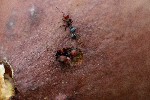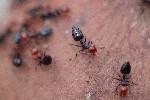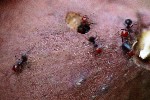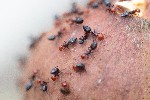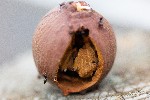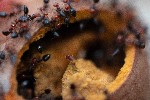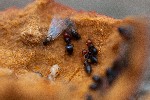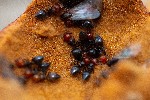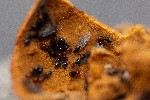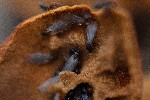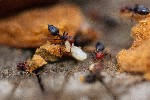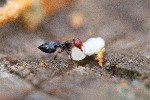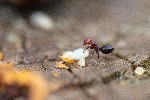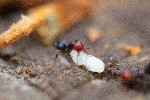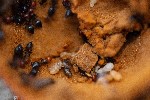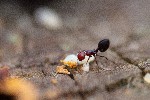

Ant Nest in a Gall
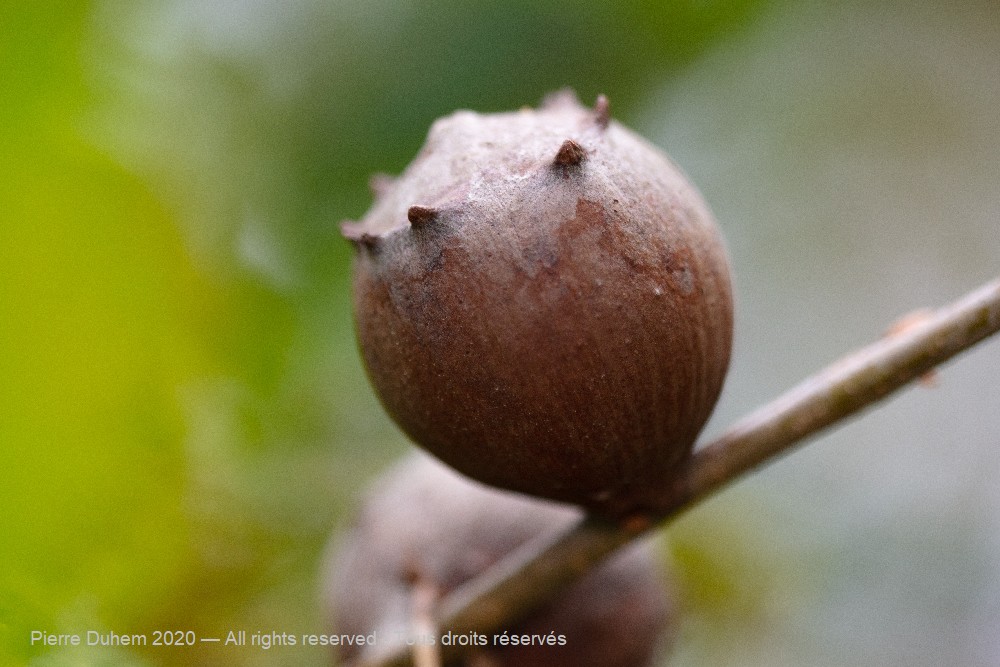
Along the coast of the French department of Landes, in Vielle-Saint-Girons, a dried gall of Andricus quercustozae from last year (or maybe older) was still sitting on a twig of Quercus robur.
To have a better look at it, I plucked it. What was not my surprise...
Click below on the thumbnails to display a bigger picture.
Click again on the picture to come back.
I suddenly saw ants coming out through the exit hole of the galling insect. Those specimens of Crematogaster scutellaris looked panicked.
I had not yet understood the disaster I had provoked... I thought initially that a couple of nomadic ants had chosen this gall as a resting shelter. But more and more ants were coming out...
I decided to open the gall to see what happened inside. I had soon to be aware of the obvious facts. It was an ant colony, fully featured, founded in this gall of about 4 cm in diameter. The ants had hollowed out almost all the spongious matter found inside the gall, around the central chamber where, one or two years ago, lived the lawful occupant of the gall.
This complete ant colony had developped in this gall which remained bound to the oak twig. There were even some winged males and females, probably not mature yet, which didn't move, unlike female workers, because the time to swarm, mate and found a new colony had not come yet.
One could also see nymphs, that female workers tried to carry away to protect and save them.
The litterature offers many descriptions of ant colonies founded in galls of Andricus quercustozae. They offer a good shelter, spacious (up to 4 or 5 cm in diameter) and easy to arrange. Some ant species choose galls fallen on the ground, others prefer galls remaining on the oak twigs.
See the page on this gall on the website of Willem N. Ellis.
See the page on this gall on the website of Willem N. Ellis.
All pictures taken in August 2020.
All rights reserved.
Last update: November 2025
Questions and comments are welcome.
Back to the Feature Gallery
